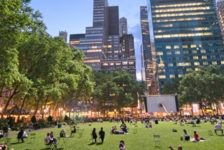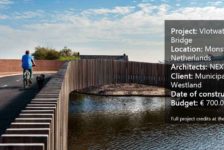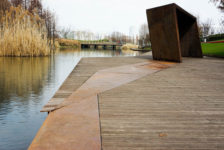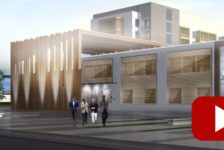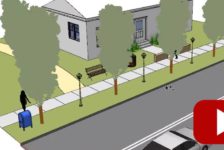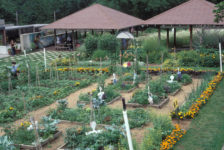Article by Emily Sinclair – Dragon Lake Bridge Park, by AECOM, in Bengbu, Anhui Province, China The Dragon Lake Bridge Park, designed by AECOM designers Lee Yi and Lian Tao, in Bengbu, Anhui Province, China, is bringing the city back to its roots as a waterfront city. Bengbu is a mid-sized city in the Anhui Province of China with a population of nearly one million people. The Dragon Lake Bridge park lies in the centre of the city along one of the major lakes. The park, full of walkways and bridges, meanders along the bank of Dragon Lake, leaving many places for vistas and terraces to bring new views of the city and the water to those enjoying the park. Designed with gentle slopes and open pavilions, the waterfront has become a central destination for city-goers to enjoy at any time of day or night.
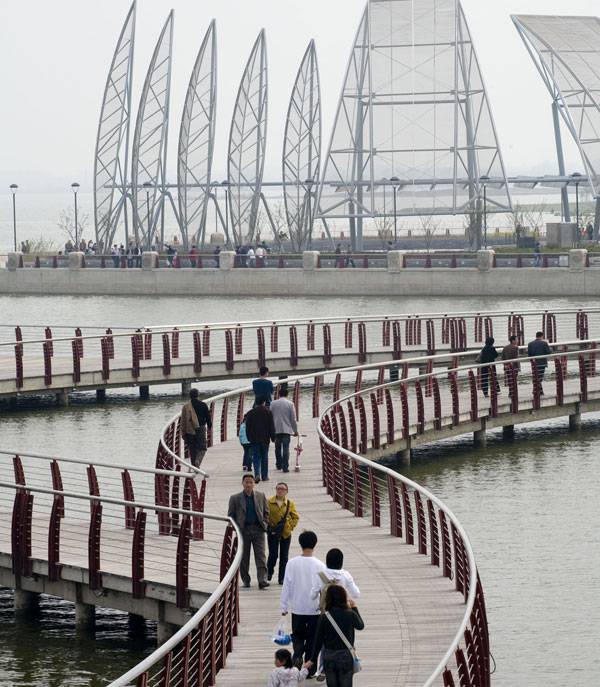
Dragon Lake Bridge Park. Photo credit: AECOM
Dragon Lake Bridge Park
Water from the Beginning
From the beginning of the design conception for this park, the history and culture of the surrounding Chinese landscape has been an important inspiration. The city’s connection to the water has been part of its identity since its inception. Even in name – ‘Bengbu’ in Chinese translates to ‘Clam Wharf’. With the Huai River and Dragon Lake nearby, the city grew as a center of the freshwater pearl industry.
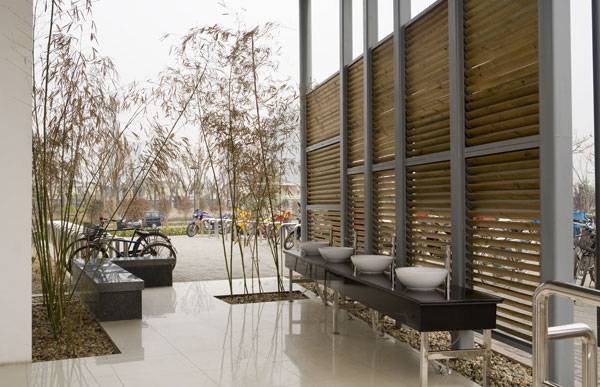
Dragon Lake Bridge Park. Photo credit: AECOM
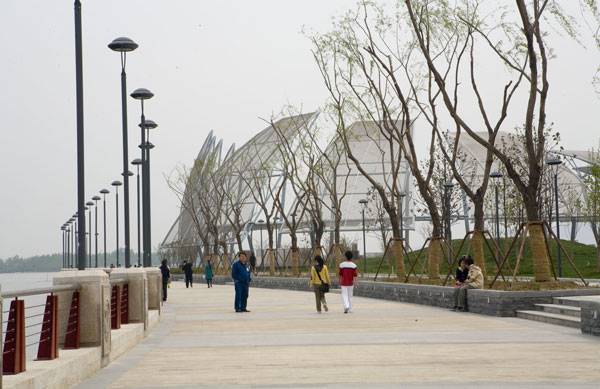
Dragon Lake Bridge Park. Photo credit: AECOM
Improving Water Quality
The city’s historic connection to water was important from the beginning, especially because of the polluted nature of the waters. The waters which once provided recreation and economic support to the locals had become dangerous with high levels of algae bloom. In order to return the waters of what is now known as Dragon Lake Bridge Park to healthy, normal levels, a variety of measures were implemented.
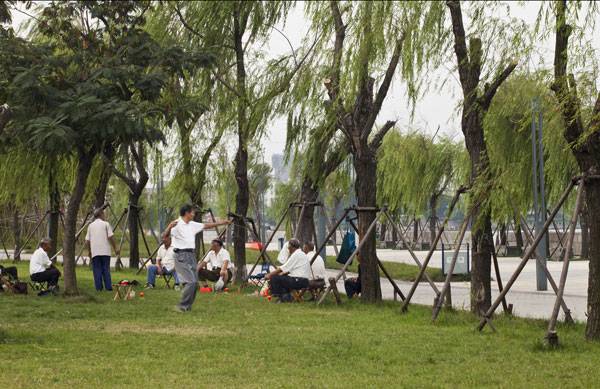
Dragon Lake Bridge Park. Photo credit: AECOM
Establishing a New Signature District
What would a new lakefront park be without city dwellers inhabiting it? Many areas for different programing are included in the design of this park. The simple materials with lighting subtly inset between rails and under steps make this a destination during the day and at night.

Dragon Lake Bridge Park. Photo credit: AECOM
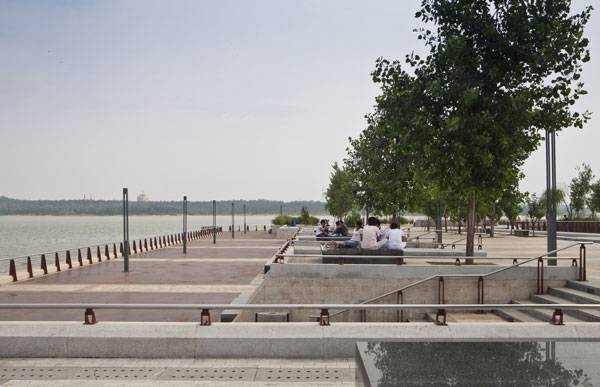
Dragon Lake Bridge Park. Photo credit: AECOM
Plants and Local Identity
The planting scheme around the park is carefully chosen to reflect the surrounding natural landscape and situate the park within its regional context. The park spans 25 hectares in total, and throughout the park one can find numerous indigenous trees and native plants. Especially worth visiting is the Bamboo Garden and Celebration Plaza. This area, located at the center of the park, provides space for galleries, outdoor exhibitions, and sculptures while still maintaining a distinctly Chinese character.
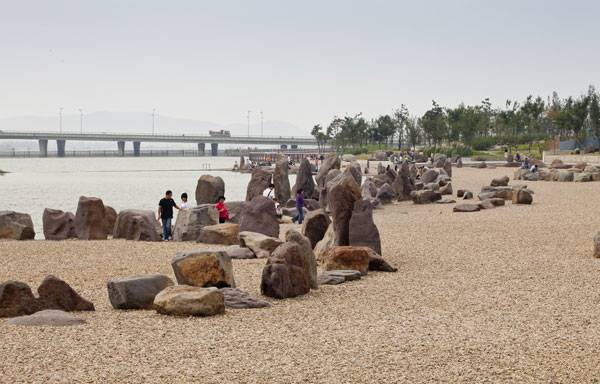
Dragon Lake Bridge Park. Photo credit: AECOM
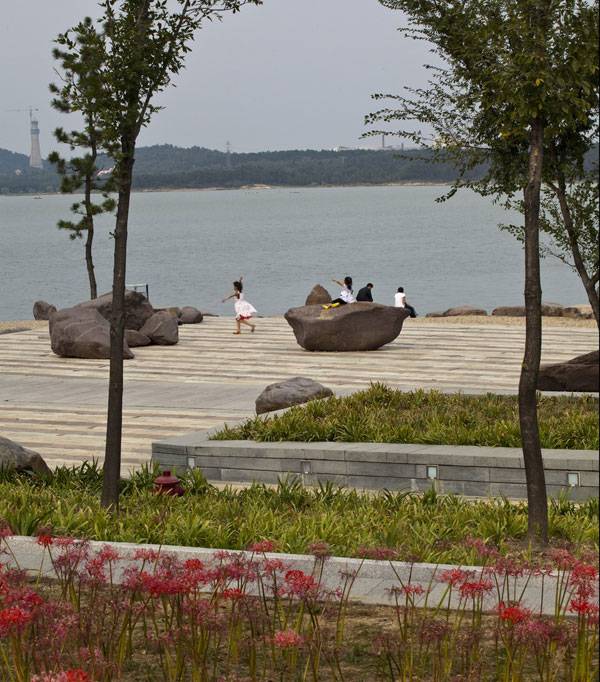
Dragon Lake Bridge Park. Photo credit: AECOM
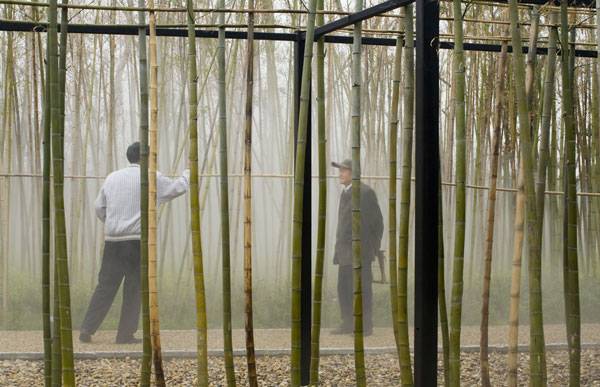
Dragon Lake Bridge Park. Photo credit: AECOM
Full Project Credits For Dragon Lake Bridge Park :
Project Name: Dragon Lake Bridge Park Firm: AECOM, Los Angeles Location: Bengbu, Anhui Province, China Budget: 40 million Date of Construction: Completed May 2009 Size: 25 Hectare Awards: 2010 ULI Global Award for Excellence Client: Xincheng Comprehensive Development Zone Bengbu Recommended Reading:
- Becoming an Urban Planner: A Guide to Careers in Planning and Urban Design by Michael Bayer
- Sustainable Urbanism: Urban Design With Natu




